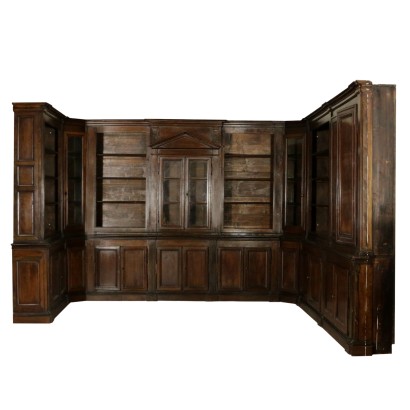Bookcase - Wainscoting
Features
Style: Neo-Classical (1765-1790)
Age: 18th Century / 1701 - 1800
Year: Ultimo quarto del '700
Origin: Italy
Main essence: Walnut
Description
An impressive Neoclassical bookcase/wainscoting, a series of doors with panels on the base. The shelf has an open compartment and two pairs of doors of which one is in the middle with glasses and a tympanum above. Single doors with angled glasses. Pediment with shaped frame. Original front and uprights. The back has been partly amended in the 20th century. Manufactured in Italy, last quarter of the 18th century.
Product Condition:
Fair condition. Wear consistent with age and use. Any damage or loss is displayed as completely as possible in the pictures.
Dimensions (cm):
Height: 254,5
Width: 395
Depth: 216
Maximum size (cm):
Depth: 337
Additional Information
Style: Neo-Classical (1765-1790)
This historical period includes a first phase that can be properly defined as the Louis XVI style.nOnly at a later time, with the maturation of archaeological fashions, was a new vision of furnishing civilization formulated and codified, now fully attributable to the Neoclassical Style.
In fact, both trends coexisted in unison until the last years of the eighteenth century.
nIn the field of cabinet making, the Directoire, Retour d'Egypte, Consular and Empire styles also fall within the neoclassical era.
nFind out more about Neoclassicism with the insights from our blog...
n

































